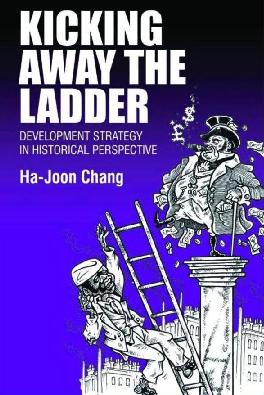
Аннотация
In this section, I examine the experiences of a range of NDCs – Britain, the USA, Germany, France, Sweden, Belgium, the Netherlands, Switzerland, Japan, Korea and Taiwan – and consider what kinds of industrial, trade and technology (ITT) policies they used when they themselves were developing countries. I show that in most of these countries, the policies that were used are almost the opposite of what the present orthodoxy says they employed ‘and currently recommends that the currently developing countries should also use’.
Once a country gets ahead of other countries, it has a natural incentive to use its economic and political powers to pull ahead even further. Britain’s policies, especially those of the eighteenth and nineteenth centuries, are the best examples of this. What is disconcerting is that these policies have so many parallels with those pursued in our time by developed countries in relation to their developing counterparts.
In this chapter, I have examined the history of industrial, trade and technological (ITT) policies in a number of NDCs when they were developing countries – Britain, the USA, Germany, France, Sweden, Belgium, the Netherlands, Switzerland, Japan, Korea, and Taiwan. The picture that emerges from this historical review is fundamentally at odds with the picture held by Neo-Liberal commentators, and indeed by many of their critics.
In this final section of the chapter, I first summarize my review of the role of ITT policies in the development of a number of key individual NDCs (section 2.4.1). I then draw an overall picture from these country profiles and conclude that, while virtually all countries used infant industry promotion measures, there was considerable diversity across countries in terms of the exact policy mix (section 2.4.2). I then compare the ITT policies of the NDCs in earlier times with those of today’s developing countries and argue that, once we consider the productivity gap they need to overcome, today’s developing countries are actually far less protectionist than the NDCs themselves were in the past (section 2.4.3).
Given our discussion in this chapter, what can be said about institutional development among now-developed countries (NDCs) in the past? I realize that a generalization in this context is hazardous given the Institutions and Economic Development I I I paucity of historical records (especially for the smaller countries) and the differences across countries. Nevertheless, such a generalization is necessary for the purpose of the present book, and I will attempt to address the question in this section.
I do this by first providing snapshot pictures for three different stages of development in the NDCs (section 3.3.1). I look at: (i) 1820, for the early days of industrialization even in the most advanced NDCs; (ii) 1875, for the height of industrialization in the more advanced NDCs and the beginning of industrialization in the less developed NDCs; and (iii) 1913, for the beginning of industrial maturity in the more developed NDCs and the height of industrialization in the less developed NDCs. In the following section, I point out that the process of institutional development in the NDCs has been slow and uneven (section 3.3.2). I then compare levels of institutional development in the NDCs in earlier times with those that are found in today’s developing countries (section 3.3.3). I conclude that contemporary developing countries actually have much higher levels of institutional development than the NDCs did at comparable stages of development.











Комментарии к книге "Kicking Away the Ladder. Development Strategy in Historical Perspective"